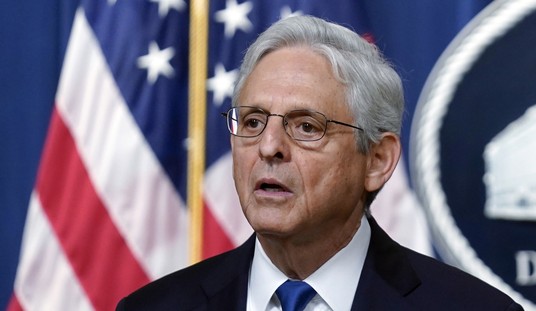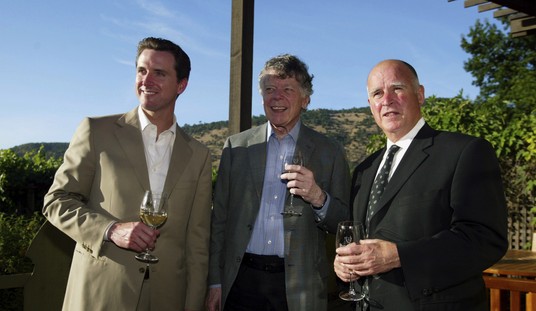The Times Online‘s account of the offensive against the insurgent strongholds in Mosul entitled “Iraqis lead final purge of Al-Qaeda” captures one part of the Coalition’s efforts to shape the battlefield in the final months of the Bush administration’s tenure. Readers may recall that when General Petraeus briefed Congress on the situation in Iraq in April, 2008 he produced a map which contrasted al-Qaeda’s Iraqi network in December, 2006 and compared it with the situation in March, 2008. Steady effort had chopped the continuous network of infiltration routes which once led from the Syrian border down the Euphrates and Tigris rivers to converge on Baghdad into disconnected segments. But like a snake severed in pieces by a hatchet yet still spitting venom, the largest remaining piece was centered around Mosul, still clinging tenuously to ratlines anchored on the nearby Syrian frontier. It was that last al-Qaeda redoubt which was the subject of a furious attack by Iraqi forces codenamed “Lion’s Roar”, according to the Times Online.
American and Iraqi forces are driving Al-Qaeda in Iraq out of its last redoubt in the north of the country in the culmination of one of the most spectacular victories of the war on terror. After being forced from its strongholds in the west and centre of Iraq in the past two years, Al-Qaeda’s dwindling band of fighters has made a defiant “last stand” in the northern city of Mosul.
A huge operation to crush the 1,200 fighters who remained from a terrorist force once estimated at more than 12,000 began on May 10. Operation Lion’s Roar, in which the Iraqi army combined forces with the Americans’ 3rd Armoured Cavalry Regiment, has already resulted in the death of Abu Khalaf, the Al-Qaeda leader, and the capture of more than 1,000 suspects.
The Times correspondent wrote that while progress in the north was palpable, al-Qaeda was still hanging on by its fingernails. “Even in the district of Zanjali, previously a hotbed of the insurgency, it was possible to accompany an Iraqi colonel on foot through streets of breeze-block houses studded with bullet holes,” and that Al-Qaeda had been reduced to “hit and run operations”; that while “American and Iraqi leaders believe that while it would be premature to write off Al-Qaeda in Iraq, the Sunni group has lost control of its last urban base in Mosul and its remnants have been largely driven into the countryside to the south.”
Meanwhile in the south, another drama was unfolding, this time against the battered forces of Moqtada al-Sadr. Bill Roggio reported the arrest of senior Mahdi army leaders by Iraqi security forces in its former sanctuaries in Sadr City. It was part of larger and continuing campaign to dismantle the Iranian-supported militias in the south. “Clashes broke out in the Sadr City district in northeastern Baghdad after Iraqi forces detained a senior Sadrist leader, an Iraqi news outlet reported … The move in Sadr comes one day after Iraqi soldiers closed the Sadrist office in the neighborhood of Shula, where the Sadrist maintain a strong presence. This is the second Sadrist office to be closed in Shula since May. … Iraqi and US forces continue to target Mahdi Army leaders in Baghdad and the wider South. Coalition special operations forces captured “senior member of Iranian-trained Special Groups leadership” in the Karadah district in southeastern Baghdad. ”
But like al-Qaeda in the the north, Sadr’s Army, while reeling, was still not down for the count. A car bomb attack in the Sha’ab neighborhood in northern Baghdad which targeted a police patrol and killed six Iraqis was a reminder of that. The fight against the proxy armies like the al-Qaeda and the Shi’ite militias are protracted and painstaking affairs. It was like fighting a chronic disease; it might be under control and its victims might even lead normal lives. But danger was never far away.
The difficulty of the process was underscored by the long and arduous fight against the biggest proxy army of all: Hezbollah. The Small Wars Journal looks how both sides of the decades-long struggle were seeking a truce in the form of the Syria-Israeli peace talks now under way. Both sides might have had enough; at least for the present. David J. Haimsky writes in Small Wars Journal that while Syria has failed to regain the territory in 1967 despite decades of support for Hezbollah, Israel had been unable to land a knockout blow against it. This inconclusive struggle might drive both combatants to consider calling a time out. But while the main effect of a peace agreement between Israel and Syria would be to reduce Syrian support for Hezbollah in Lebanon it would also have the side-benefit of further draining away logistics for al-Qaeda in Iraq. Because there was always the danger the al-Qaeda snake would regenerate once US forces drew down, diplomats were anxious to salt the stumps of its connections with Syria now.
Syria, being one of the main entry points of foreign fighters to Iraq, has created numerous obstacles for the US during the course of its counterinsurgency efforts there. Notwithstanding the fact that al Qaeda in Iraq is currently in decline, the battle is far from over and the revival of this terrorist network remains a real possibility. If Syria is to be compelled to cut its support to extremist organizations and crack down on their activities within its borders as part of a comprehensive peace deal, al Qaeda in Iraq would be further isolated, thus, improving the capacity of the US and Coalition Forces to stabilize the country. The anticipated draw-down of US forces in Iraq will constrain the Coalition’s ability to root out al Qaeda, which further magnifies the importance of this measure.
Whether or not an Israeli-Syrian peace agreement can be concluded before the end of the Bush administration remains to be seen. Also uncertain, but less so is the fate of the status of forces negotiations between the United States and Iraq. That agreement will determine the extent of long-term US presence in Iraq and the authority of the host government over US forces and operations there. The negotiations have alternatively been reported as dead in the water, in progress or a done deal, depending on the source. Barack Obama’s recent walkback from his promise to abandon Iraq may be aimed, in part, at keeping the parties from closing out of a fear of what a possible Obama administration might do.
Taken together these developments provide a rough, but fairly probable picture of what the situation will look like when the Bush Administration leaves office. Domestically, Al-Qaeda will probably have been reduced to insignificance, but remain dangerous within its dormancy. The Iranian militias will likely have been reduced to a shadow of their former selves, but still capable of occasional mayhem. On the international front, Iran will enter 2009 still unbeaten but Teheran will be casting an anxious eye at its protege, Hezbollah, which the US and Israelis will be trying to strangle. The Ayatollahs will look warily at the new Iraq, not only for the reasons of traditional geopolitical rivalry but also because the Iraqi Shi’ite south could be a sanctuary for political subversion against it. Most of all Teheran will be closely watching the United States bases in Iraq, knowing their utility goes beyond preserving Iraqi sovereignty but also as points from which the US can exploit any weaknesses in Iran.
All in all, the incoming administration will inherit a winning, but not a won hand in the region. Whether it holds up or folds up is up to them.










Join the conversation as a VIP Member